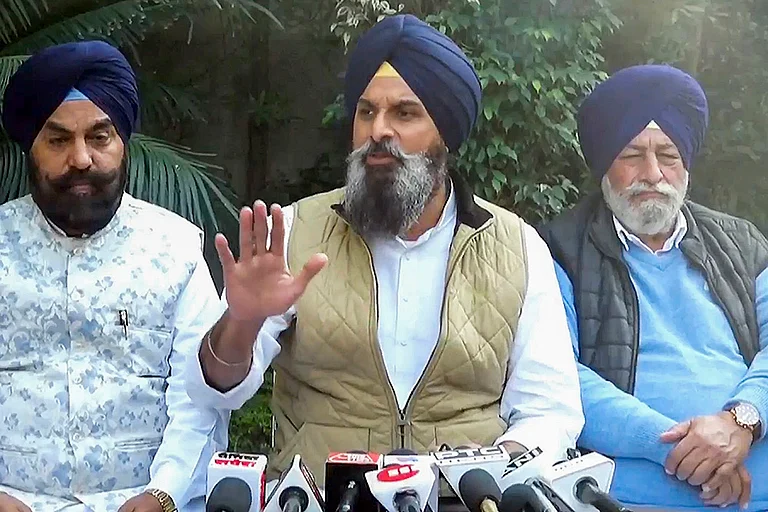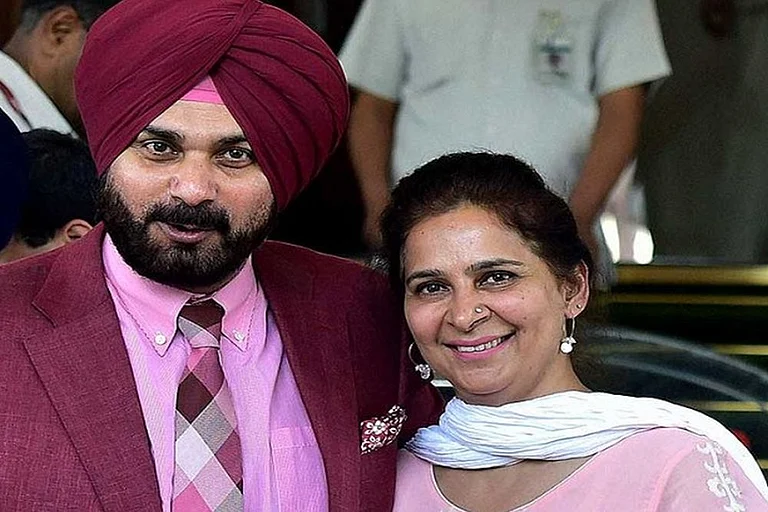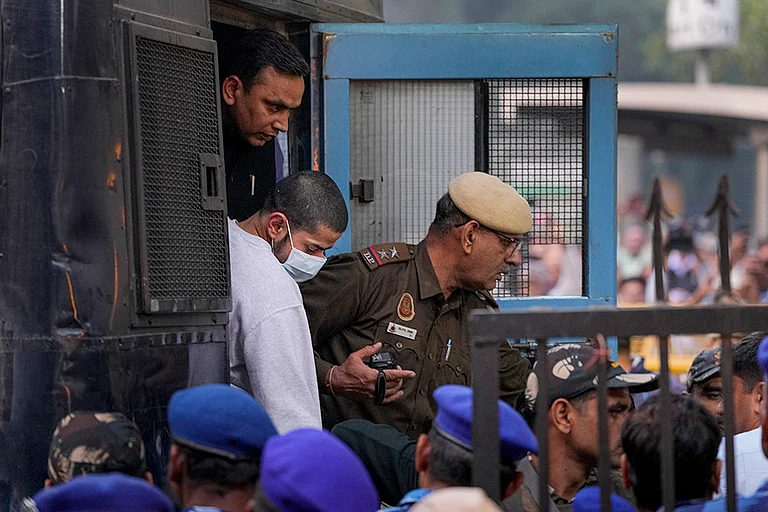The gangsters who assassinated Moosewala come from the Singh is Kinng culture prevalent in Punjab. It is based on a violent assertion of the self. Those who adopt it are quickly brought to justice by the police as and when they break the law. But during the little time that they are able to have their run, an aura is created about them. It fascinates many young men and women. In the hothouse world of social media, for a few months in 2016-17, this culture even claimed to find inspiration from Sikhism. But its actions were far, far away from that honourable religion. Sikhism forms the core of the culture of Punjab. It teaches humility and compassion. But once that is given up, what is left is a detritus of ego and violence. It is this detritus which finds expression in these gangsters.
Every once in a while, organisations like the ISI of Pakistan reach out to them, provide them with logistical support in the hope that their activities would spark off some conflagration in India. It goes to the credit of the people of Punjab that they reject this culture of ego and violence. Even during the heyday of the Khalistan movement–Ramesh Inder Singh, a senior civil servant from Punjab–tells us in his recently published memoir, only six per cent of the people surveyed in Punjab had any sympathy for that violent movement. After terrorism had been finished in Punjab, one of its main leaders, Simranjit Singh Mann, vowed to continue with the demand for Khalistan, but within the framework of parliamentary democracy as is prevalent in India. He still professes that line of thought and people do not mind electing him to represent them in Parliament. The gangsters, though, are outside the pale of such politics. Theirs is a purely violent enterprise. That it is also criminal is something with which we have to learn to live, given the weaknesses of those who are tasked with enforcing the law in our peace-loving land.
A brief look at the trajectory of terrorism in the 1980s and 1990s in Punjab shows that violent social trends, if unchecked, can go haywire and have tragic consequences. Young men like to seek adventure. In the Singh is Kinng culture they also seek out izzat, honour. One of the few data-based studies of Punjab terrorism was done by Harish Puri, Paramjit Judge and Jagrup Sekhon. They found that these were young boys who were “seeking out honour” from the community and they revelled in being respectfully called “babaji” by a populace filled with fear. Eventually, it was the sustained campaign by the Punjab Police under leaders like K.P.S. Gill that quickly marginalised such behaviour and brought terrorism to an end. So it is a little worrisome that state authorities in Punjab have repeatedly shown themselves to be incapable of quickly bringing the present lot of gangsters to justice. This allows the gangsters leeway to build up a larger-than-life persona for themselves. It is important to note that this criminality is not the result of poverty or victimisation of any kind but of culture having gone haywire.

Till just a few years ago, these gangsters would publicise their violent actions and thoughts on Facebook to thousands of adoring followers. Pictures with many guns and pistols were rife. Not a single one of the weapons was legal. Yet the police remained unconcerned about such displays. “Brother you are great” was one of the most widely-used phrases from male admirers on such Facebook posts. “O brave one, I adore you” would be the gist of comments from female followers. This is the gangster version of ‘self-radicalisation’.
Now we know that at least some of the young admirers volunteer to join a gang merely to do the nefarious bidding of these jailed gang overlords. According to a recent police statement, Lawrence Bishnoi, the gangster who is at the centre of the Moosewala killing, has a ‘gang’ of over 800 spread over three states. It is another matter that Bishnoi has been in jail since 2016. He completed his studies at Panjab University, Chandigarh, where his first visible violation was when he was caught by an invigilator cheating in a college exam. A normal student would have apologised, or suffered the usual penalties for becoming a ‘UMC case’, a quaint phrase used in Panjab University: Unfair Means Case. Bishnoi ran away from the examination hall. Not through the door but, as his former teachers recall, through the window. Nothing happened to him after he came back. Not even a dressing down by the principal. In the following years, he did feature in newspapers frequently. Always in the context of some violent crime or the other. His police file grew. So did his fan following on social media. As did his ability to evade the police and escape from custody. By the time he was finally arrested in 2016, he had over 50 cases against him. Since then, he has been in jail. Yet his gang has grown. He has been able to coordinate Moosewala’s assassination by way of taking “revenge” for the killing of someone else.

Coeval with Bishnoi’s actions were the actions of a student who had taken admission in the Department of History at Panjab University. He helped coordinate what came to be known as the ‘Nabha jail break’ that involved the escape of a number of gangsters and one Khalistani terrorist from one of the most secure jails in India. Please note, these are not any riff-raff of our society. These are young men in their twenties. Among the two per cent elite of their age cohort, who were capable enough to get admission into a university, join a highly competitive post-graduate programme and from there execute complex extra-academic tasks that require coordination with hundreds of henchmen, spread across thousands of kilometres, involving a budget of many lakhs. They certainly lack the ability to understand that a lawful and peaceful life is far more adventurous and profitable than the life of a gangster. If only our society could convince them—through saam, daam, and dañd—to use their abilities to do some good.
(This appeared in the print edition as "Gangsta’ Rapsheet")
(Views expressed are personal)
M. Rajivlochan Is a professor at Panjab University





















